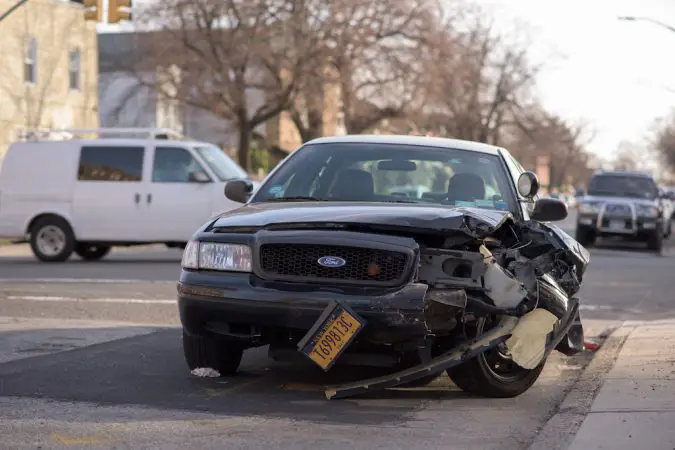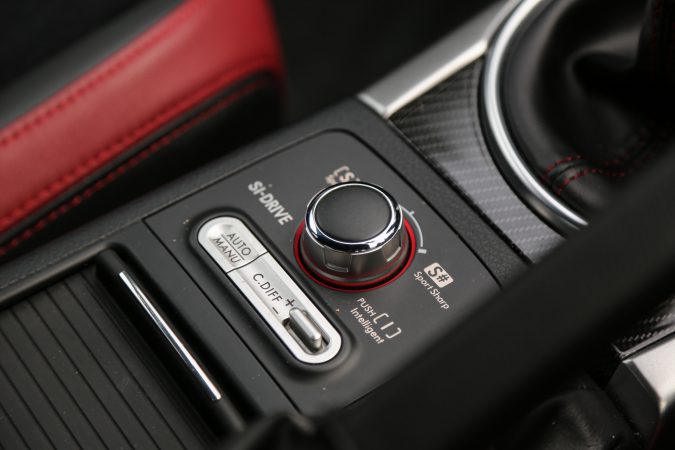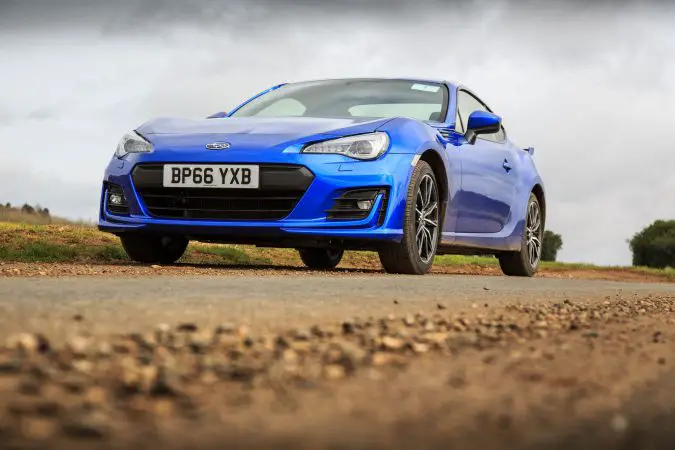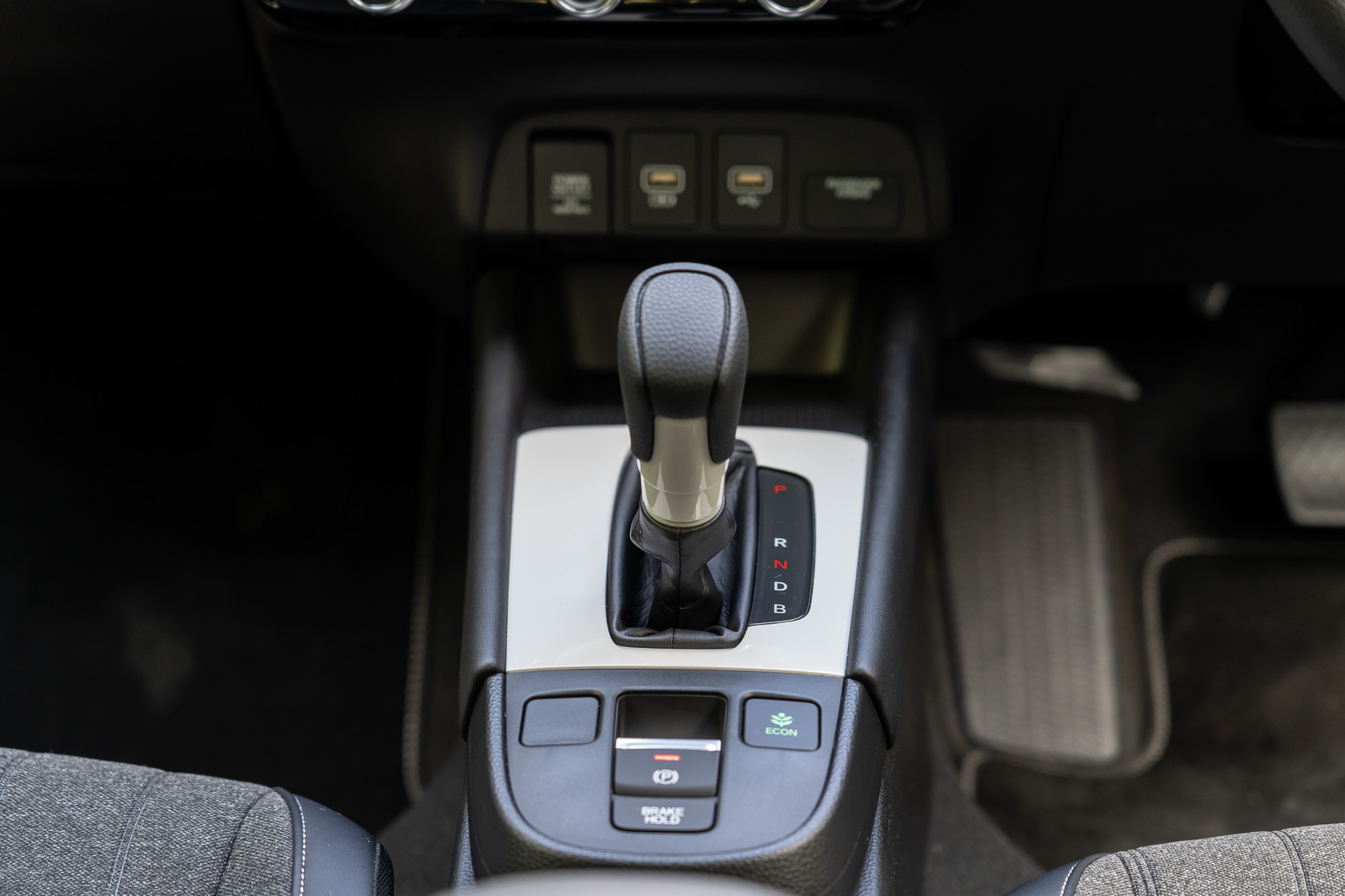You’ve seen hundreds of videos on Youtube, you’ve probably seen it in real life as well. And now, you’re thinking of doing a burnout, but your car is an automatic. Can you do it? Of course, you can! In this guide on how to do a burnout in an automatic car, we’ll teach you how to do a burnout.
But keep in mind, there are risks to doing a burnout. Not to mention, the legal concerns of doing it. Don’t worry, we’ll talk about everything you need to know.
What Exactly Is A Burnout?
Burnout is spinning your car’s wheels while your car remains in place. It requires you to put your foot down on the throttle while engaging the brakes. This means your driven wheels will spin trying to move the car along, but the brakes will hold the car in place. As a result, the driven wheels will keep spinning, burning the rubber on your tires – hence why it’s called a burnout. But because the brakes are on, your car will remain in place.
Burnouts: What Is It Good For?
A burnout is good for entertainment: it’s fun to watch, and fun to do. It’s exciting to see a car revving its engine as high as possible while producing thick smoke from the tires. We can’t think of anything better than the smell of burning rubber early in the morning. But it’s not all just fun and games, there’s actually a good reason for burnouts when you’re drag racing.
Drag racers always do burnouts before the race, this is so they can warm up their tires before the race. Cold tires – especially slick racing tires – have less grip, in the case of drag racing, this will result in slower launches and slower acceleration, and can cost them the race.
This is why drag racers do burnouts, so they can warm up their driven wheels before the race and have optimal grip. It’s also why they need to do it properly: if the burnout is too short, then the tires won’t warm up enough. But burnout for too long, and the tires will overheat which will also result in less grip.
Burnouts: Is It Legal?
All this leads to the question: is it legal to do a burnout? The short answer is no, burnouts are illegal in public spaces. But there’s more to it. First, it’s illegal to do a burnout on public roads and spaces. It’s an activity that can pose danger to other motorists and is considered a form of illegal street racing, which is, well, illegal. So, avoid doing burnouts on public roads, car parks, or any other public areas.
But how about doing burnouts at a private property? Well, if the property isn’t yours, then you’ll need to ask for permission from the owner. If the property is yours, then you can do it since you’re not putting anyone else in danger like you would on public roads. However, keep in mind that burnouts are loud. This may attract your neighbors or people around you and they may complain or even sue you for “disturbing the peace“. Fines can be as high as $2,000, and you can face up to a year in jail.
Of course, the legal way to do a burnout is to do it at a drag strip. You normally won’t be able to do a burnout at race tracks, since there are rules at race tracks. But it’s perfectly okay (and legal) to do a burnout when you’re going drag racing at a drag strip. So, if you want to stay out of legal trouble, find a drag strip near you. The entrance fee to a drag strip is usually around $20 – $30.
Drag Strip Etiquette
Even drag strips have their own rules, regulations, and basic etiquette that you should know about! If you join a drag racing event, then they’ll probably brief you on these rules. But if you’re just doing a test & tune night, then it won’t hurt to ask if there are any rules you should be aware of. Here is some basic etiquette you should know:
- Staging lanes are the box you have to go to before you race. Make sure you go to the right staging lane, and if you’re participating in an event, don’t attempt a run in a class where you shouldn’t be competing. Also, don’t pass cars in the staging lane unless they signal you to do so.
- There are speed limits in the pits and staging lanes, be sure to respect them. This is for the safety of everyone.
- Don’t do burnouts outside the designated areas. They can kick you out of the drag strip for this.
- If you’re doing a race, don’t do burnouts until directed by an official.
- Drivers will sometimes like to brake hard at the finish line, causing the wheels to lock up. Don’t do this.
There are many more rules & regulations, and they may vary from one place to another, especially if you’re participating in an event. Watch the video above for more information and we suggest you ask for the rules to make sure that you and everyone else can have a great day at the strip!
How To Do A Burnout In An Automatic Car: The Risks
Doing burnouts on public roads is very risky. You may hit a curb or a pole, damaging your car in the process. Or even worse, you may hit someone else, killing them in the process and you may be charged with involuntary/vehicular manslaughter. Yikes, that got dark real quick. Anyway, that’s why it’s a good idea to do burnouts at a drag strip or private property rather than on public areas.

On top of the legal concerns, there are mechanical risks to doing burnouts as well. This is because most cars aren’t designed to do burnouts. And when you do them, you’re forcing many components out of their comfort zone. Many components will grind against each other, wearing them down much quicker.
Your tires will wear out, shortening their lifespan. Additionally, since the brakes will have to work hard keeping the car in place, the brake pads – and possibly the rotors – will also wear out quicker. You will also cause excessive friction and heat in the transmission and possibly the drive shaft, which can damage them. And finally, burnouts typically require you to redline your car. Doing this for a prolonged period can damage your engine.
How To Do A Burnout In An Automatic Car
So, now you know the legal aspects and the risks of doing burnouts. You’re probably itching to know how to do a burnout in an automatic car now. We’ll guide you on how to do that shortly, but first here are some safety precautions:
- Find an open area with no obstacles. If this is your first time doing a burnout, it’s best if you practice first and find an open (and private) space to do so. This will reduce your risk of hitting an object, avoiding expensive repair bills for your car that can cost thousands of dollars.
- Don’t let your friends stand near your car. We get it, you probably want to show off to your friends that you and your car can do an awesome burnout. We’re car enthusiasts ourselves, we’ve all been there. But it’s best if they stand a bit further back. There are risks of flying debris and broken parts, not to mention you may lose control of the car and hit them. Nobody wants that, make sure no one is standing near your car.
- The only thing you should smell when doing a burnout is the burnt rubber from your tires. Any other burnt smell is probably coming from your transmission, at this point, you should stop and let your car cool down.
Final Disclaimer
Again, we remind you that burnouts can be dangerous especially in public areas. We implore you not to do this in public spaces and find a private property or drag stip instead. Attempting to do burnouts under the supervision of professional drivers or instructors would be ideal.
Also, we remind you that burnouts can damage your car. Not just the tires, but major components such as the transmission and the engine. Repairing them will cost thousands of dollars, and you should be aware of this. We are not responsible for any damage, accidents, or legal consequences you may encounter when doing a burnout.
How To Do A Burnout In An Automatic Car: Front Wheel Drive
Right, with that out of the way, how do you do a burnout in an automatic? First, you need to know that the method of doing this is different depending on whether your car has front-wheel-drive or rear-wheel-drive. If you have a front-wheel-drive car, here’s how to do it:
- Disable traction control if your car has them since traction control will limit engine power when it detects tire slippage. Additionally, modern cars may have driving modes, in which case you should choose the driving mode with the most power.
- Pull your parking/emergency brake, make sure it’s fully engaging.
- Put your left foot on the brake, and put the car into drive. If your automatic transmission has a manual override, put it in first gear.
- Remove your left foot from the brake, and put your foot down the throttle. You should be doing a burnout now.
- Try to keep it in your car’s power and torque band, this is the RPM range where your engine’s power is most optimal. Every car is different, but most cars will have it around 3,000rpm to 5,000rpm. Keeping them in this RPM range will make it easier to do a burnout, and helps to keep your car in control.
- Make sure the steering wheel is always straight to keep it in control.
- Stop immediately if your front tires aren’t spinning or you’re not seeing or smelling burnt rubber from the tires to prevent damage to your car.
One last tip, if your car is underpowered, spraying water on the front wheels may help. Water makes it slippery and your tires will have difficulty finding traction. As a result, the wheels will spin more easily and it can help to initiate the burnout.
How To Do A Burnout In An Automatic Car: Rear Wheel Drive
As for rear-wheel-drive cars, here’s how to do it:
- Again, disable traction control if your car has them so that your car will allow tire slippage. And of course, modern cars may have driving modes, in which case you should choose the driving mode with the most power.
- Press the brake pedal with your left foot and put the transmission in drive. Use the manual override if your car has it, and put it in first gear.
- Make sure your left foot press firmly on the brake, and put your right foot down on the throttle. You should be doing a burnout now. If your tires don’t spin immediately, very slightly and slowly release the brake pedal to allow the rear wheels to spin.
- Keep the RPM range in your car’s power and torque band to maintain the burnout.
- Make sure the steering wheel is always straight to keep it in control.
- Stop immediately if your tires aren’t spinning or you’re not seeing or smelling burnt rubber from the tires to prevent damage to your car.
Again, you can spray water onto the rear tires to make them more slippery and help initiate the burnout.
How To Do A Burnout In An Automatic: Questions & Answers
And there you have it, now you know how to do a burnout in an automatic car! Got any more questions, we’ll try to answer them below:
Can I Do Burnouts In An All-Wheel Drive Car?
It’s possible, but it’s more difficult to do and you run a higher risk of damaging the transmission, differentials, and the driveshaft amongst other things.
This is because all-wheel drive cars mean all four wheels are powered by the engine and they will spin when you put your foot down the throttle. This means you will be forcing the brakes to force the wheels to stop them from spinning to keep the car in place, which can grind components and damage them.
Whereas, for example, in a rear-wheel-drive car, the front wheels aren’t powered by the engine. So the front brakes won’t have to work overly hard to keep the car in place, minimizing friction between components and the damage to your car.

However, some all-wheel drive cars may have the ability to disengage either the front or rear differential. When the differential disengages, for example, let’s say the front differential disengages, this means that power from the engine won’t get to the front wheels. Meaning you can do a burnout by holding down the brake pedal since the car is now effectively a rear-wheel-drive car.
Also, some cars may have a system that allows you to send minimum power to the front wheels, as little as 10%. This means the front wheels are getting less power, and the brakes won’t work as hard in holding the car while doing a burnout. In this case, it’s possible and easier to do a burnout, but you’re still at a higher risk of damaging major components.
My Car Won’t Do A Burnout, What Should I Do?
If your car won’t do a burnout, there are two possible reasons: first, your car may have traction control and there’s no button to disengage the system. As mentioned, the traction control works by limiting and distributing engine power to the appropriate wheel when it detects slippage.
Some cars have traction control but don’t have a button on the inside, in which case you can’t turn it off and it was engaging when you were trying to do a burnout. You might be able to pull out the fuse for the traction control system to disable it, but it will vary depending on the car. But if you’re able to do this in your car, remember to put the fuse or turn the system back on. Traction control is a safety feature and can help you avoid accidents on public roads.

The second reason is that, and we’re sorry we have to say this, your car just doesn’t have enough power. A burnout requires the car to have enough power to overcome the brake force to spin its wheel. With not enough power and torque, your car simply won’t be able to overcome this and won’t be able to do a burnout.
We’re not sure how much power you will need exactly, but even something like a Subaru BRZ with around 197 horsepower and 136 lb-ft (relatively low for sports cars standard) can do burnouts.
Consider making upgrades to your car to increase its power output. Cold air intake, exhaust systems, spark plugs, and ECU tuning is good to start for you to increase power. Also, remember our tip about spraying water onto the driven wheels? This may also help to initiate the burnout. Or, maybe it’s time you get that new car you’ve been eyeing at?
I Have A Diesel, Can I Do Burnouts?
Yes, of course, you can. If anything, diesel engines should be quite excellent. This is because diesel engines typically have plenty of torque down-low in the RPM range, which helps to initiate burnout. You need horsepower to maintain the burnout, but torque is what you need to initiate it. The difference between torque and horsepower will be far too complex to explain here, but basically, torque is a measurement of rotational force, specifically in the engine’s crankshaft.
Meanwhile, horsepower or power measurements are the amount of power from the engine to the wheels. Or a more accurate and scientific explanation is how rapidly a work can be accomplished. In simpler terms, torque is what you need to get the car going. Meanwhile, horsepower is what you need to achieve the top speed.
But we digress. The point is that yes, diesel engines can do burnouts thanks to the immense torque they usually have.
Any Maintenance I Should Do After Doing A Burnout?
Not really, but if you hear any rattling noises from the car or any unusual noises for that matter, you might want to inspect that. You may have damaged the car after you do the burnout, which is why we warned you at the beginning. Parts that may become damaged include the transmission assembly, the brakes, and even the engine. But otherwise, you’re fine.
However, if you want to be safe, you should inspect the tires first and foremost. Burnouts will eat up the tires, and you may lose a lot of tread on the tires. If the tires seem very worn out, consider replacing them to keep your car safe to drive. After that, see if the brakes are making any squealing or grinding noises when you brake, as they may wear out as well.
Other than that, there’s not much else you can do. This is because you can’t inspect the engine, the transmission, the driveshaft, and the differential without opening them which costs a lot of money. Just make sure there aren’t any weird noises, and keep up with regular maintenance.
How to Do a Burnout: Tips and Tricks
- Burnouts involve spinning the wheels of a car at a high frequency, producing a large amount of smoke, and originating from drag racing to heat tires for optimal traction.
- To perform a burnout, you need a car with lots of horsepower and smooth, street tires.
- Burnouts are easiest to do in manual transmission cars, but can also be done in automatic transmission cars.
- When performing a basic burnout, put the car in first gear, rev the engine, release the clutch, and ease off the accelerator and free the brake to stop.
- For a peel-out, depress the clutch with the car in gear, rev the engine high, and release the clutch abruptly to spin the wheels on the road before moving.
- To do a donut, find a large open area, begin driving in slow circles, then hit the gas hard so that the rear tires lose traction and perform a spinning donut.
- Rollback burnouts are like regular burnouts, but performed on a hill, and can help with traction in underpowered cars.
- A line locker is a device that modifies a car so the brake pedal only engages the front brakes and can be used to do a burnout by engaging the front brakes and disengaging the back brakes, leaving the back wheels free to spin, burn, and make smoke.
- Burnouts and line lockers are almost always illegal and can be dangerous.
How To Do A Burnout In An Automatic: Wrap Up
Now you know how to do a burnout in an automatic! To recap, if you have a front-wheel-drive car, use the parking/emergency brake to keep the car in place as you try to spin the front wheels. If you have a rear-wheel-drive car, press the brake pedal all the way down and then mash the throttle. Pretty simple, right? And if you have an all-wheel-drive car, well, good luck.
Again, we remind you that doing burnouts in public areas is illegal, dangerous, and can get you into legal problems. Find a private area to do burnouts, but the best place to do it at a drag strip. Who knows, you might even find a friendly professional that will help you to practice. Anyway, have fun and drive responsibly!

